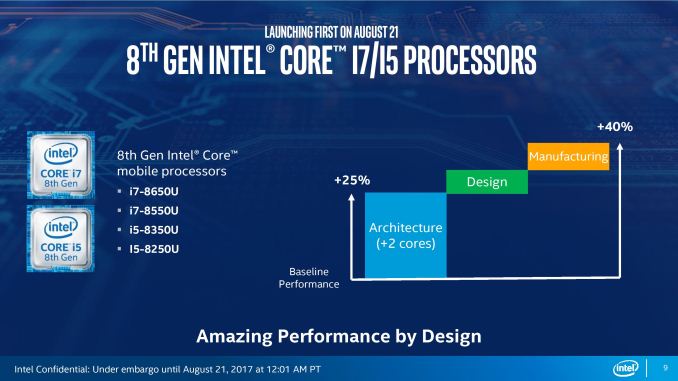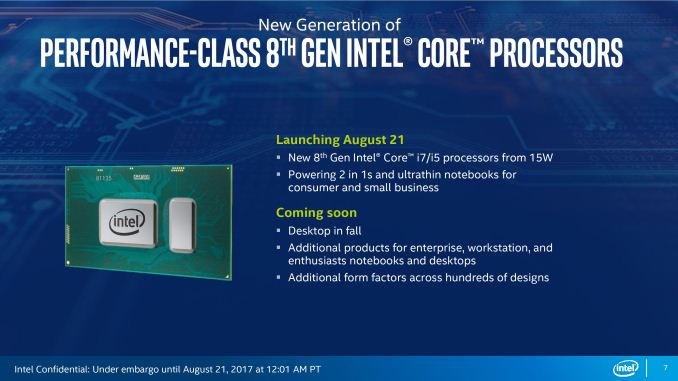Today is marked by new processors from Intel. In the morning, the first chips from the 8th generation called Kaby Lake refresh were officially presented. So far, we have announced the energy-saving 15W chips from the series with the internal designation U, other models from the family should follow. In the case of 15W processors, these are models that appear in notebooks and other portable devices. According to the first information, it looks like we are in for a significant performance shift.

Today's official presentation was preceded by one leak from last week. However, we wanted to wait for the official data. This morning Intel finally introduced the i5 8250U, 8350U and i7 8550U and 8650U models.
In terms of architecture, this is basically the same chip as from the current generation of Kaby Lake processors. Kaby Lake refresh is therefore just a slight evolution (as the name suggests) that uses only a slightly modified production process. However, the biggest change is the number of cores. Instead of the original dual-core solutions, the new processors are natively quad-core (plus Hyper Threading). For the same price and under the same operating conditions, users will now receive significantly more performance.
Does it all sound too good? Compared to the previous generation, clocks have decreased slightly, although Turbo Boost frequencies are still quite high. The increase in cores also affected the size of the L3 cache, which now has a capacity of 6 or 8MB. Memory support is the same as in the case of the original Kaby Lake chips, i.e. DDR4 (new max 2400MHz) and LPDDR3 (LPDDR4 is therefore not happening again, we will have to wait for that until next year, with the arrival of the Cannon Lake architecture). The performance of the integrated graphics is unchanged. Only new instruction sets and native support for UHD resolution via HDMI 2.0/HDCP 2.2 have been added.

You can see a comparison of the new generation with the older one below. For the average consumer, the new processors mean a significant increase in performance, without any increase in price. However, how the new processors will perform in practice is largely unknown. Especially in the 15W chip segment, it was already quite hot. These processors usually appeared in products that did not stand out with very powerful cooling. With the number of cores doubled, it will be interesting to see how the new processors perform in the new laptops, especially with regard to CPU throttling.

Source: Anandtech, Techpowerup
The reduction of the basic beats does not seem insignificant to me!
Most of the time the frequency will be raised anyway, thanks to Turbo Boost. It will only be seen in practice how it will be with cooling at higher frequencies.
That's right, it's a 25% reduction in base clock on average.
However, at the basic clock speed, those little things won't heat up much... so it will depend a lot on the cooling, how much it will go against the Turbo Boost...
Well, it's always just about the beat (in addition, it's just about the basic frequency, which is mainly used when powered by a battery). The first thing is that the moment you have more physical cores, you can afford to lower the base clock. The second thing is that not every instruction ends successfully the first time. For example, it fails 1000 times before it is successfully completed. The moment you improve the processor so that a given instruction fails only 300 times, for example, you no longer need such performance to catch up with the time when the instruction failed. Of course, at the moment when the notebook is running from the source, the processor can be overclocked even to the maximum frequency and can render at rest, for example.
I'm not saying that this is the reason why the clock rate was reduced, but that these factors can also affect the base frequency of the processor.